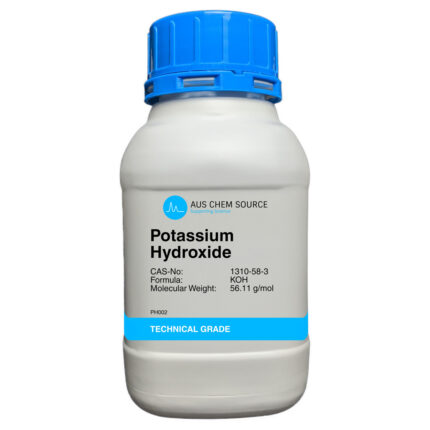Description
Hydrochloric acid, often abbreviated as HCl, is a strong and highly corrosive mineral acid. It is a colorless, pungent-smelling liquid with the chemical formula HCl. Here are some key points about hydrochloric acid:
- Chemical Composition: Hydrochloric acid consists of hydrogen (H) and chlorine (Cl) atoms. Its chemical formula, HCl, indicates that each molecule contains one hydrogen atom and one chlorine atom.
- Acidity: Hydrochloric acid is a strong acid and is known for its high acidity. It readily donates hydrogen ions (H+) in aqueous solutions, making it highly corrosive.
- Physical Properties:
- State: Hydrochloric acid is typically a colorless liquid at room temperature.
- Odor: It has a strong and pungent odor.
- Solubility: It is highly soluble in water, and its solutions are commonly referred to as hydrochloric acid.
- Concentration: Hydrochloric acid is available in various concentrations, with common ones including concentrated forms like 37% and diluted forms for specific applications.
- Common Uses:
- Chemical Manufacturing: It is used in the production of various chemicals, including chlorine gas, sodium chloride (table salt), and various pharmaceuticals and industrial chemicals.
- Metal Cleaning and Pickling: Hydrochloric acid is used for cleaning, pickling, and passivating metals and alloys to remove rust, scale, and oxides.
- Laboratory Use: It is a common reagent in laboratories for various chemical reactions and analyses.
- Water Treatment: Hydrochloric acid is used in water treatment processes to adjust pH levels, control alkalinity, and remove impurities.
- pH Adjustment: It is used to lower the pH of solutions and industrial processes.
- Safety Precautions: Due to its highly corrosive nature, hydrochloric acid should be handled with extreme caution. Personal protective equipment (PPE) such as gloves, eye protection, and lab coats should be worn when working with it. Adequate ventilation is essential to prevent the inhalation of fumes.
- Environmental Impact: The release of hydrochloric acid into the environment can have detrimental effects on aquatic ecosystems and soil quality. Proper disposal and control measures are essential.
- Neutralization: In laboratory and industrial settings, bases like sodium hydroxide (NaOH) are often used to neutralize hydrochloric acid spills or solutions.
Hydrochloric acid is a widely used chemical in various industries due to its strong acidity and versatile properties. It is essential to handle it with care, follow safety guidelines, and dispose of it properly to ensure safety and minimize environmental impact.












Reviews
There are no reviews yet.